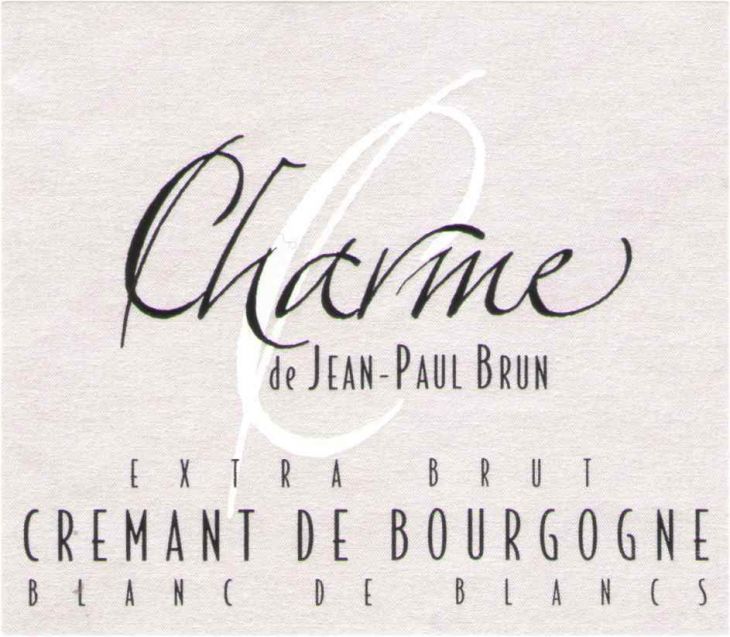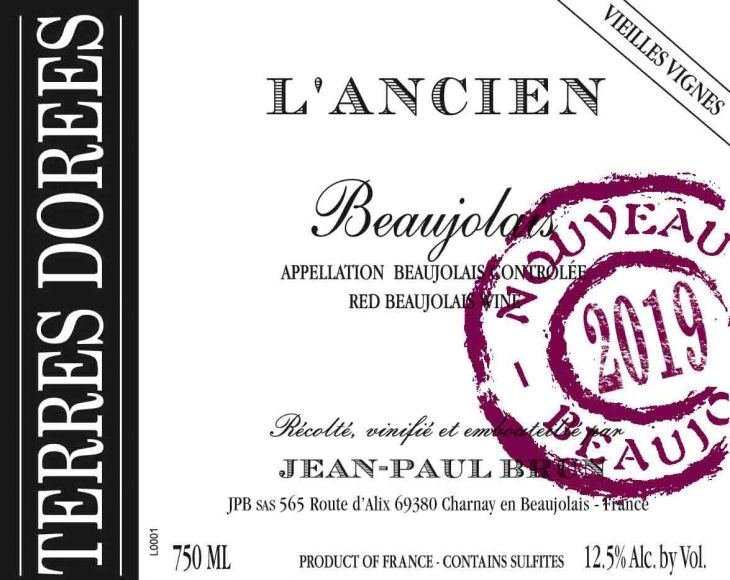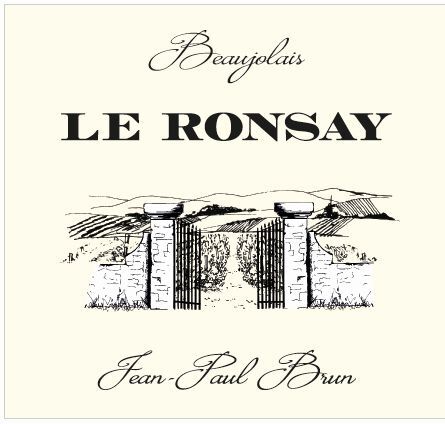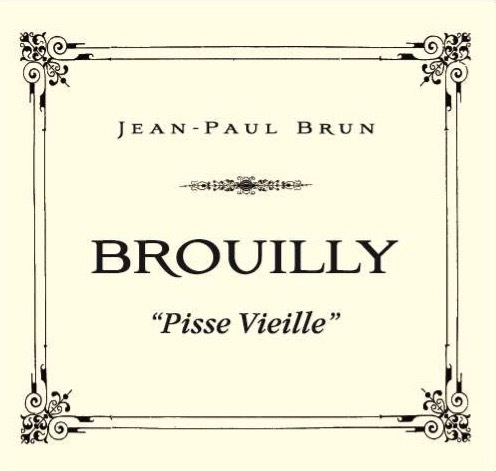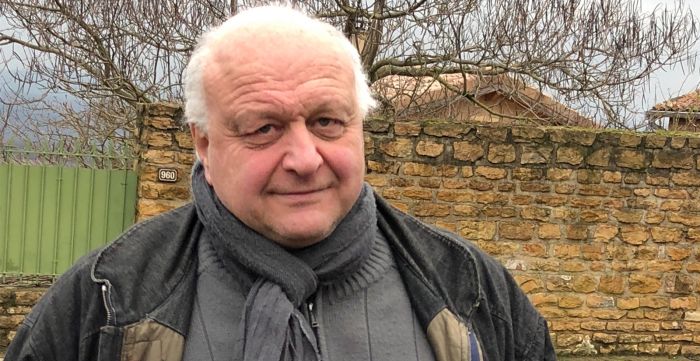
producer profile
28.06.2019
Domaine des Terres Dorées Producer Profile
<p>Jean Paul Brun is located in <span class="zalup"><span><glossary title="273">Charnay</glossary><span>,</span></span></span> a village in the Southern <glossary title="151">Beaujolais</glossary> just north of Lyon, in a beautiful area known as the "Terres Dorées" or <em>Region of Golden Stones</em>. Brun is the owner and winemaker at this 60+ <glossary title="523">hectare</glossary> family <glossary title="427">estate</glossary> and has attracted the attention of the French and American press for the wonderfully fruity and delicate wines he produces.</p>
<p>Brun wants to make "old-style" <glossary title="151">Beaujolais</glossary> and his <glossary title="1104">vinification</glossary> differs from the prevailing practices in the region. He believes that the charm of <glossary title="478">Gamay's </glossary>fruit is best expressed by the grapes' <span class="zalup"><span><glossary title="538">indigenous yeasts</glossary><span>,</span></span></span> rather than by adding <span class="zalup"><span><glossary title="321">industrial yeast</glossary><span>.</span></span></span> Virtually all <glossary title="151">Beaujolais</glossary> is now made by adding a particular <glossary title="1128">yeast</glossary> during <span class="zalup"><span><glossary title="441">fermentation</glossary><span>.</span></span></span><br />
<br />
Known as 71B, this <glossary title="1128">yeast</glossary> is a laboratory product made in Holland from a tomato base, which imparts wines with banana and candy aromas. It produces a beverage, but with no authenticity and little charm. Brun, on the other hand, wants to make a pure <glossary title="478">Gamay</glossary> wine. <br />
<br />
Brun's view is that <glossary title="151">Beaujolais</glossary> drinks best at a lower degree of alcohol and that there is no need to systematically add sugar to the <glossary title="700">must</glossary> (<glossary title="270">chaptalize</glossary>) to reach alcohol levels of 12 to 13 degrees. His <glossary title="151">Beaujolais</glossary> is made to be pleasurable - light, fruity and delicious - not an artificially inflated wine that shines at tasting competitions.<br />
<br />
Only a minimal amount of <glossary title="993">S02</glossary> is used at bottling to keep the wine fresh and "headache-free". Fermentation naturally produces a lot of <span class="zalup"><span><glossary title="310">CO2</glossary><span>,</span></span></span> which acts as protection against <glossary title="754">oxidation</glossary> during <glossary title="74">aging</glossary>; leaving some in the wine at <glossary title="185">bottling</glossary> time also helps to keep it fresh. <glossary title="447">Filtration</glossary> is also minimal so that the wine keeps its original fruit and aromas. Brun’s wines are not ‘blockbusters’ in the sense of ‘big.’ The emphasis is not on weight, but on fruit: <glossary title="151">Beaujolais</glossary> as it once was and as it should be.<br />
<br />
Brun’s <glossary title="725">Nouveaus</glossary> were rated as the top <glossary title="725">Nouveau</glossary> of the vintage by France’s <em>Gault Millau </em>magazine several years in a row. <glossary title="865">Robert Parker</glossary> has rated Brun as a four-star producer (the only other <glossary title="151">Beaujolais</glossary> producers with four stars are in the <glossary title="1152">Crus</glossary>) and has written about his wines:<br />
<br />
“Proprietor Brun is a believer in using only the vineyard’s <span class="zalup"><span><glossary title="538">wild yeast</glossary><span>,</span></span></span> rather than the <glossary title="321">synthetic yeasts</glossary> used by most other producers. His beautiful wines are favorites among purists.”</p>
<p><u><strong>2020 Update:</strong></u></p>
<p>Starting with just four <glossary title="523">hectares</glossary> of vines, Jean-Paul has truly created a self-made empire. After progressively expanding around his native <glossary title="273">Charnay</glossary> in the southern <span class="zalup"><span> <glossary title="151">Beaujolais</glossary><span>,</span></span></span> he began experimenting with a <span class="zalup"><span><glossary title="259">Cerdon</glossary><span>-</span></span></span>like sparkling wine called "FRV100", a <span class="zalup"><span><glossary title="1317">Crémant de Bourgogne</glossary><span>,</span></span></span> then planted some <glossary title="805">Pinot Noir</glossary> and <glossary title="878">Roussanne</glossary> on his <glossary title="301">clay</glossary> and <glossary title="596">limestone</glossary> soils and eventually started <glossary title="185">bottling</glossary> those as well. </p>
<p>In the mid 2000's, Jean-Paul set out to conquer <glossary title="151">Beaujolais</glossary>' <span class="zalup"><span><glossary title="1152">crus</glossary><span>.</span></span></span> He currently owns land and produces from most of of them, including the most recent addition of <glossary title="959">single vineyard</glossary> <span class="zalup"><span><glossary title="363">cuvées</glossary><span>.</span></span></span> All told, he now produces well over 20 different wines from over 60 <glossary title="523">hectares</glossary> of vines and shows no sign of slowing down. </p>
Article

interview
28.06.2019
An Interview with Jean Paul Brun from 2011
<p><strong><em>This interview with Jean Paul Brun took place in New York City in April 2011.</em></strong></p>
<p><strong>Tell us about your beginnings. </strong></p>
<p>I started Terres Dorées in 1979 with four <glossary title="523">hectares</glossary> of vines. We are currently at about 30 <span class="zalup"><span><glossary title="523">hectares</glossary><span>.</span></span></span> I am based in <span class="zalup"><span><glossary title="273">Charnay</glossary><span>,</span></span></span> a village in the southern <glossary title="151">Beaujolais</glossary> with <glossary title="596">limestone</glossary> soils. I also own 15 <glossary title="523">hectares</glossary> spread between other <glossary title="1152">crus</glossary> of the <span class="zalup"><span><glossary title="151">Beaujolais</glossary><span>,</span></span></span> namely <span class="zalup"><span><glossary title="369">Côte de Brouilly</glossary><span>,</span></span></span> <span class="zalup"><span><glossary title="685">Morgon</glossary><span>,</span></span></span> <glossary title="691">Moulin-à-Vent</glossary> and <span class="zalup"><span><glossary title="454">Fleurie</glossary><span>,</span></span></span> all of which are on <glossary title="502">granite</glossary> soils. <br />
<br />
The first wine we ever made was our <glossary title="151">Beaujolais</glossary> <glossary title="163">Blanc</glossary> from <span class="zalup"><span> <glossary title="271">Chardonnay</glossary><span>.</span></span></span> Today eight <glossary title="523">hectares</glossary> are dedicated to it. The second was our <glossary title="740">old vine</glossary> <glossary title="">Gamay</glossary> called "L'Ancien". Things progressed and led to another white <glossary title="363">cuvée</glossary> <glossary title="74">aged</glossary> in <glossary title="731">oak</glossary> and another <glossary title="185">bottling</glossary> of younger vine <glossary title="478">Gamay</glossary> called<strong> "</strong>Cuvée Premiere" as well as a <glossary title="805">Pinot Noir</glossary> that was planted in the early 90's. Recently I've begun making a <glossary title="1392">late harvest</glossary> <span class="zalup"><span><glossary title="271">Chardonnay</glossary><span>,</span></span></span> a <glossary title="271">Chardonnay</glossary> <glossary title="361">crémant</glossary> and a "<glossary title="653">méthode ancestrale</glossary>" <glossary title="871">rosé</glossary> from <glossary title="478">Gamay</glossary> ("FRV100").<br />
<br />
As far as the other <span class="zalup"><span><glossary title="1152">crus</glossary><span>,</span></span></span> I have five <glossary title="523">hectares</glossary> in <glossary title="691">Moulin-à-Vent </glossary>and <span class="zalup"><span><glossary title="454">Fleurie</glossary><span>.</span></span></span> I make a basic <glossary title="454">Fleurie</glossary> and a <glossary title="824">1er Cru</glossary> called "Grille Midi". I currently only make a basic <glossary title="691">Moulin-à-Vent</glossary> but am in the process of searching for a <glossary title="760">parcel</glossary> to make <glossary title="824">1er cru</glossary> in the future. The <glossary title="369">Côte de Brouilly</glossary> and <glossary title="685">Morgon</glossary> wines are made on a much smaller scale. <br />
<br />
<strong>How did you personally get involved with wine?</strong><br />
<br />
You can say I've been in it since I was a little boy. Before I converted Terres Dorées<em> </em>into an <span class="zalup"><span><glossary title="427">estate</glossary><span>,</span></span></span> it used to be a farm with cows, sheep, pigs, prairies, cereal and four <glossary title="523">hectares</glossary> of vines. When he noticed I was interested in winemaking, my father stopped selling our grapes to the <glossary title="252">cave cooperative</glossary> and we started making and <glossary title="185">bottling</glossary> it ourselves. My first <glossary title="1104">vinification</glossary> was in 1977. <br />
<br />
When my father retired I initially rented the vines from him and started<em> </em>Terres Dorées. I did everything myself at the time, including going to Paris to sell my wines to shops and restaurants. It worked out rather well and I haven't stopped since.<br />
<br />
<strong>What's the work like in the vines?</strong><br />
<br />
We were working <glossary title="331">conventionally</glossary> for a very long time and over the last decade we've worked <glossary title="746">organically</glossary> for all the non <glossary title="1152">cru</glossary> vines. It was very difficult at first, especially the process of working the soil and grass, but we've gotten better at it and it's working out well. <br />
<br />
<strong>You shy away from making traditional, whole-cluster, semi-carbonic Beaujolais and opt for a more Burgundian style of winemaking. Can you explain this choice?</strong><br />
<br />
This is definitely something that sets us apart. It took us a long time to be recognized for doing this but people are finally coming around to it. We do indeed work in a <glossary title="210">Burgundian</glossary> fashion. We start with a tray table were we hand pick the clusters before <span class="zalup"><span><glossary title="378">destemming</glossary><span>.</span></span></span> We then place the juice in <span class="zalup"><span> <glossary title="1140">vats</glossary><span>,</span></span></span> do <glossary title="795">pigeages</glossary> and <glossary title="610">macerate</glossary> for 4 to 6 weeks depending on the <span class="zalup"><span><glossary title="1152">cru</glossary><span>.</span></span></span> We then <glossary title="74">age</glossary> the wine in <glossary title="325">cement</glossary> <glossary title="1140">vats</glossary> or <glossary title="731">oak</glossary> depending on the <glossary title="1109">vintage</glossary> and <span class="zalup"><span><glossary title="113">appellation</glossary><span>.</span></span></span> <br />
<br />
The reason I work this way is because I wanted to make wines that you can drink and appreciate easily, but also that can pair well with a full meal or that you can keep and <glossary title="74">age</glossary> in the <span class="zalup"><span><glossary title="254">cellar</glossary><span>.</span></span></span> From early on I felt that the traditional <glossary title="151">Beaujolais</glossary> style of <glossary title="1124">whole-cluster </glossary><glossary title="942">semi-carbonic maceration</glossary> didn't work with my wines and when I made them this way I wanted to <glossary title="74">age</glossary> them longer to soften up the <span class="zalup"><span><glossary title="1010">tannins</glossary><span>.</span></span></span> Of course <glossary title="151">Beaujolais</glossary> is usually released rather early and if I had made my wines in this style, I wouldn't have felt comfortable releasing them before at least a year and a half of <glossary title="74">aging</glossary> before release. This way, I can release my wines in the spring and be happy with them. <br />
<br />
We're trying to push things even further by <glossary title="">aging</glossary> everything until June or July and releasing the latest <glossary title="1109">vintage</glossary> at the time of the current <span class="zalup"><span><glossary title="">harvest</glossary><span>.</span></span></span> This was the plan for 2010 and was impossible due to the the incredibly high demand for 2009, and we plan to do this for the 2011 <span class="zalup"><span><glossary title="1109">vintage</glossary><span>.</span></span></span> <br />
<br />
<strong>Do these work methods pose any problems with the AOC's you work in?</strong><br />
<br />
I'm not in jail yet so I guess it corresponds to whatever their criteria may be. What ultimately matters is quality. I think that I may one day get in trouble for not using <glossary title="1124">whole clusters</glossary> but in my opinion the wines have better structure, <glossary title="74">age</glossary> better and are just more interesting. <br />
<br />
<strong>How do you feel about your AOC as whole, and more specifically how your wines fit in this idea of a regional "typicity"?</strong><br />
<br />
I think the concept of the <glossary title="108">AOC</glossary> is sound: wine is from a specific region and I think it's more interesting to defend a region than a <glossary title="1071">varietal</glossary> that can be grown anywhere in the world. But it's up to the <glossary title="1089">vigneron</glossary> to be honest and express the <span class="zalup"><span><glossary title="1071">varietal</glossary><span>,</span></span></span> the <span class="zalup"><span><glossary title="1026">terroir</glossary><span>,</span></span></span> the <glossary title="1109">vintage</glossary> and the region, not the <span class="zalup"><span><glossary title="108">AOC</glossary><span>.</span></span></span> <br />
<br />
<strong>What's your take on the whole "natural wine" debate? </strong><br />
<br />
There are so many different styles of <glossary title="708">natural wine </glossary>that it becomes difficult to classify them all into one definition. In fact why classify them at all? <br />
<br />
For me there are two types of wines: <glossary title="540">industrial wines</glossary> you see everywhere, with <span class="zalup"><span><glossary title="853">residual sugar</glossary><span>,</span></span></span> added or reduced <span class="zalup"><span><glossary title="71">acidity</glossary><span>,</span></span></span> artificial coloring etc...<br />
<br />
Then there's what I would call <glossary title="121">artisanal</glossary> wines, wines where you taste and feel the <glossary title="1089">vigneron</glossary>'s sensibilities. The merit of <glossary title="1026">terroir</glossary> and <glossary title="113">appellation</glossary> are part of those sensibilities, but what truly matters is that the wine is made well. I find it unfortunate when people discredit themselves, claiming to make "honest" wine by working naturally, yet the wines have serious <span class="zalup"><span><glossary title="453">flaws</glossary><span>.</span></span></span> This is inadmissible: before talking about how a wine is made, you must first make sure that their is nothing to critique in the quality of it's taste. <br />
<br />
I think a lot of people are getting too caught up about making wine without <span class="zalup"><span><glossary title="993">sulfur</glossary><span>.</span></span></span> These wines have gotten a lot of press recently and I don't want people to think that I'm against making wine without <span class="zalup"><span><glossary title="993">sulfur</glossary><span>,</span></span></span> because I'm not. But we all know that <glossary title="993">sulfur</glossary> is produced naturally by the <glossary title="441">fermenting</glossary> <glossary title="1128">yeasts</glossary> to auto-protect the wine and that wine without <glossary title="993">sulfur</glossary> becomes vinegar. <br />
<br />
I can think of a few incredibly talented <glossary title="1089">vignerons</glossary> that have mastered making <glossary title="913">sans souffre</glossary> wine, wines where I've never had an off bottle, and I commend them. And I can think of even more <glossary title="1089">vignerons</glossary> that only <glossary title="993">sulfur</glossary> minimally at <glossary title="185">bottling</glossary> and also do a great job. But the majority just don't have a firm grasp of what they are doing. <br />
<br />
These people discredit wine without <span class="zalup"><span><glossary title="993">sulfur</glossary><span>.</span></span></span> The fact these wines are commercially available is a travesty to me: I'd rather these guys make <span class="zalup"><span><glossary title="331">conventional</glossary><span>,</span></span></span> <glossary title="540">industrial wine</glossary> than fucked up <glossary title="993">sulfur</glossary> free wine. They should stay home and let the big boys do the job correctly. <br />
<br />
For these guys it becomes less about making great wine and more about being part of a "cool" movement. They spend the <glossary title="521">harvest</glossary> eating the whole time and goofing off with the crew and when everyone's gone, they check what's in the <span class="zalup"><span><glossary title="1140">vats</glossary><span>.</span></span></span> And all of a sudden they notice <glossary title="69">acetate</glossary> and <glossary title="195">brett</glossary> because they didn't put any <span class="zalup"><span><glossary title="993">S02</glossary><span>.</span></span></span> And then you tell yourself: "This is a mess, I better put some <glossary title="993">sulfur</glossary> in there before everything turns to shit". So you're a <glossary title="993">sulfur</glossary> free <glossary title="1089">vigneron</glossary> that uses <glossary title="993">sulfur</glossary> when things don't go your way? It shows an incredible lack of professionalism.<br />
<br />
And as far as my personal involvement in <glossary title="708">natural wine</glossary> I think a big part of why we have been getting a lot of press recently has to do with the fact that we use <glossary title="538">natural indigenous yeasts</glossary> and that only represents about 5% of French winemaking. Honestly, it's a lot more work. During <glossary title="1104">vinification</glossary> I spend every morning inspecting every <glossary title="1140">vat</glossary> to make sure no <glossary title="69">acetate</glossary> is developing and that everything is happening smoothly. I work this way because of a personal choice, out of respect to the plant and the people that drink our wines. The quality in my grapes was already there but now we work in a way that respects nature and we know it's important for the future so it just feels like the right thing to do. <br />
<br />
<strong>What wines do you like to drink?</strong><br />
<br />
I like easy drinking reds that are light in <glossary title="1010">tannins</glossary> and fresh, crisp whites.</p>
Article
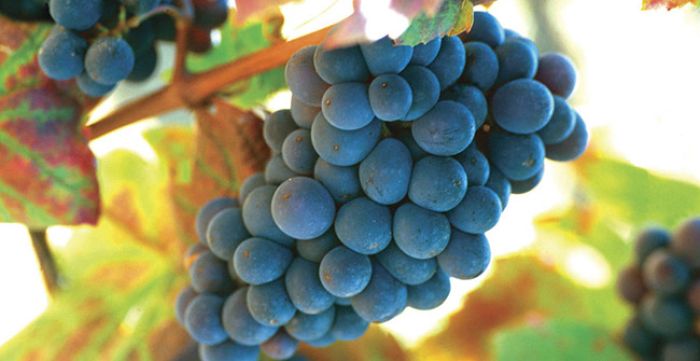
harvest report
21.12.2022
2022 Harvest Report from Jean-Paul Brun
<p>In 2022, after yet another winter that was far too mild, some small bouts of <glossary term="Frost" title="1135">frost</glossary> caused some sleepless nights. Fortunately, they were nothing compared to the historic damage in 2021. With a sunny April, <glossary term="Budding" title="1166">budding</glossary> began a bit late, around the 12th. Then came May to break all types of records, with temperatures 3° higher than ever, half as much rain and more sunlight than the vines are used to: it was looking like yet another very precocious <span class="zalup"><span><glossary term="Vintage" title="1109">vintage</glossary><span>.</span></span></span> Still in May, <glossary term="Hail" title="1136">hail</glossary> storms decimate over 400 <glossary term="Hectare" title="523">hectares</glossary> in the <glossary term="Beaujolais" title="151">Beaujolais</glossary>; our land is spared. By the end of May, <glossary term="Flowering" title="1179">flowering</glossary> has begun. </p>
<p>Then, in June, we have a brutal reversal, with a lot of rain and unseasonably cool weather. This leads to an explosion in the vegetation's vigor, which we diligently and urgently worked on. The landscape is colored by a luminous green and the <glossary term="Cluster/Bunch" title="1138">bunches</glossary> are formed around June 23rd. By July, the heat is back in full force, very sunny and much too dry. <glossary term="Veraison" title="1396">Véraison</glossary> begins mid-July: the <glossary term="Cluster/Bunch" title="1138">bunches</glossary> are small which will assure quality but also a smaller crop. Around August 15th, some rain salvages the vineyard, refreshing the vines and grapes. Everything is beautiful and in a perfect sanitary state. In the end, 2022 is the second most precocious <glossary term="Vintage" title="1109">vintage</glossary> in the last 30 years, second only to 2003. </p>
<p>We began <glossary term="Harvest" title="521">harvesting</glossary> on August 25th in the <glossary term="Cru" title="1152">crus</glossary> and on the 31st in <glossary term="Charnay-en-Beaujolais" title="273">Charnay</glossary> under good weather. The first days of picking confirm low <span class="zalup"><span><glossary term="Yield" title="1129">yields</glossary><span>,</span></span></span> especially in the <span class="zalup"><span><glossary term="Cru" title="1152">crus</glossary><span>.</span></span></span> The grapes are indeed low in juice, but the <glossary term="Acidity" title="71">acidity</glossary> is quite good; it reminds me of 2015. </p>
Article
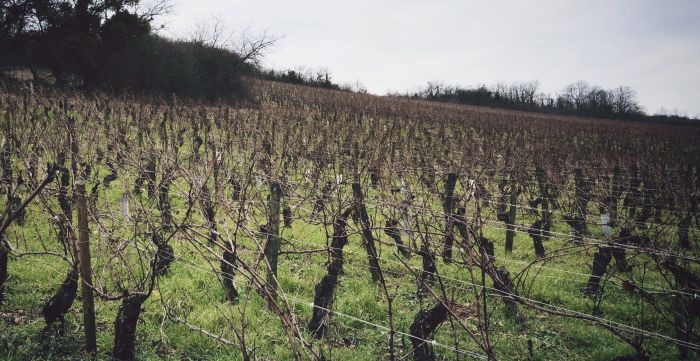
harvest report
17.10.2007
2007 Harvest Report from Jean-Paul Brun
<p><u><strong>October 17th, 2007</strong></u></p>
<p>April determined an early <span class="zalup"><span><glossary term="Harvest" title="521">harvest</glossary><span>.</span></span></span> In 2007, the saying “In April, do not drop a thread of clothing” did not apply, with temperatures reaching summer heights. The vines started growing extremely fast, but May was closer to the usual weather patterns and <glossary term="Flowering" title="1179">flowering</glossary> occurred between May 22nd and May 26th in the <span class="zalup"><span><glossary term="Cru" title="1152">crus</glossary><span>,</span></span></span> and around May 31st in southern <span class="zalup"><span><glossary term="Beaujolais" title="151">Beaujolais</glossary><span>.</span></span></span> The whole summer was gray and difficult, we had to fight against disease ceaselessly.<br />
<br />
September brought good ripeness. Dry, sunny weather started the last week of August, with a moderate north wind that dried out the vines and the grapes, helped the <glossary term="Maturation" title="639">maturation</glossary> and kept the <glossary term="Cluster/Bunch" title="1138">bunches</glossary> healthy.<br />
<br />
We started our <glossary term="Harvest" title="521">harvest</glossary> on September 2nd in <span class="zalup"><span><glossary term="Moulin-à-Vent" title="691">Moulin-à-Vent</glossary><span>,</span></span></span> followed by <span class="zalup"><span><glossary term="Côte de Brouilly" title="369">Côte de Brouilly</glossary><span>,</span></span></span> <glossary term="Fleurie" title="454">Fleurie</glossary> and <span class="zalup"><span><glossary term="Morgon" title="685">Morgon</glossary><span>.</span></span></span> We continued with the <glossary term="Estate" title="427">estate</glossary> down South, starting on September 8th. We picked under ideal conditions to ensure high quality: not a drop of rain and moderate temperatures until September 23rd.<br />
<br />
After de-vatting, the wines had good color, ripe berries aromas, these are round, easy and delicious wines.<br />
<br />
<glossary term="Vintage" title="1109">Vintage</glossary> after <span class="zalup"><span><glossary term="Vintage" title="1109">vintage</glossary><span>,</span></span></span> I try to improve my <glossary term="Vinification" title="1104">vinification</glossary> techniques. My goal is to express <glossary term="Terroir" title="1026">terroir</glossary> through its very noble medium, the <glossary term="Gamay" title="478">Gamay</glossary> grape. This is a difficult goal to reach when making a <span class="zalup"><span><glossary term="Beaujolais Nouveau" title="152">nouveau</glossary><span>,</span></span></span> because there is so little time. <glossary term="Burgundian" title="210">Burgundian</glossary> <glossary term="Vinification" title="1104">vinification</glossary> is the best in my view: there must be real osmosis between <glossary term="Must" title="700">must</glossary> and solid matter, i.e. pips and skins. Those must inform the future wine of their own character, and in turn the wine will transmit all the subtleties of the soil it comes from.</p>
Article
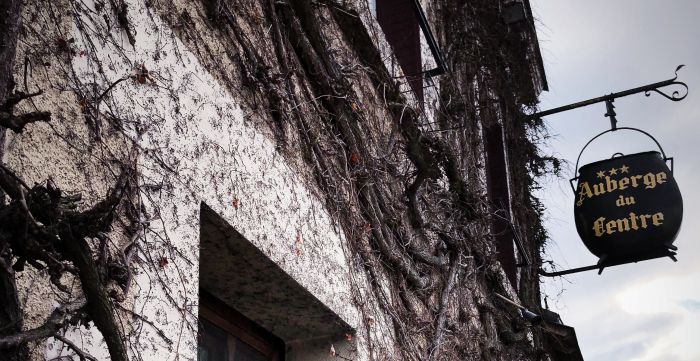
harvest report
19.09.2005
2005 Harvest Report from Jean-Paul Brun
<p><u><strong>September 19th, 2005:</strong></u></p>
<p>We started picking in <glossary title="273">Charnay</glossary> today. I’m optimistic and confident. We have a beautiful <glossary title="521">harvest</glossary> in front of us.<br />
<br />
I’d take a growing season like this any year. Everything went well, we had less to do, less corrections to make in the vineyards than we normally have. The vines look magnificent.<br />
<br />
The summer had lots of sun and dryness. I was never that concerned about the vines being overstressed, by the dry weather but the small rains we had at the beginning of September and last week were perfect. They refreshed the vines and reaccelerated the <span class="zalup"><span><glossary title="639">maturation</glossary><span>.</span></span></span><br />
<br />
The <glossary title="478">Gamay</glossary> we picked today was about 12 degrees with good <span class="zalup"><span><glossary title="71">acidity</glossary><span>.</span></span></span> The <glossary title="1129">yields</glossary> are low and correct. We’re waiting to pick the <glossary title="271">Chardonnay</glossary> as I’d like to have some <span class="zalup"><span><glossary title="721">noble rot</glossary><span>.</span></span></span><br />
<br />
The weather report predicts good weather through the next seven days. That can always change, but we might be on the verge of a great year..<br />
<br />
Many of my colleagues are in too much of a rush. Most of <glossary title="273">Charnay</glossary> has already stopped picking and I’m just starting. They get into a mind frame that they are making <glossary title="725">Nouveau</glossary><glossary title="152"></glossary> and the point is to rush out there, pick the grapes, get the <glossary title="1104">vinifications</glossary> going and pump out the <span class="zalup"><span><glossary title="725">Nouveau</glossary><span>.</span></span></span> Even if the grapes are not yet ripe. It’s a shame.<br />
<br />
I’m completely confident.<br />
<br />
Putain.</p>
<p><u><strong>Jean-Paul Brun from Terres Dorées chatting with Joe Dressner by cell phone from his cellar, September 25th, 2005:</strong></u></p>
<p>Jean-Paul says they almost feel lazy and guilty. The alcohol degree is good, the <glossary title="71">acidity</glossary> is good, there are no problems, all is advancing well, there is fruit and everything is coming together well. There's no stress, no crisis, no craziness, panic or desperation.<br />
<br />
Everything is just going well. Jean-Paul says the key decision was to pick later than everyone else. The grapes are mature and ripe, they would have been green if he had started a week earlier.<br />
<br />
They still have another week to go here and are taking their time.</p>
Article
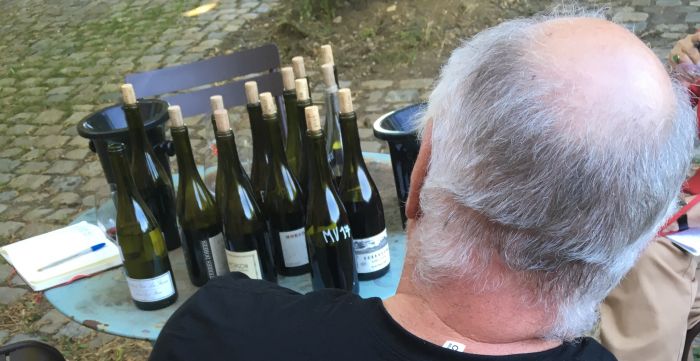
harvest report
28.09.2004
2004 Harvest Report from Jean-Paul Brun
<p><u><strong>September 28th, 2004:</strong></u></p>
<p>The <glossary title="1152">Cru</glossary> <glossary title="151">Beaujolais</glossary> are finished and they have a week left at Domaine des Terres Dorées.<br />
<br />
I've been calling around and the general impression is: "pas mal".<br />
<br />
"Pas Mal" is French for not bad. It was a very big <glossary title="521">harvest</glossary> which required lots of rigorous selection and careful <glossary title="254">cellar</glossary> work. But finally, everyone seems to feel that the results are good. Certainly, better than expected. Maybe even "pas mal".<br />
<br />
Most <glossary title="1089">vignerons</glossary> are not prone to superlatives. A "good" <glossary title="1109">vintage</glossary> usually means a great one. We'll have to see what a "not bad" <glossary title="1109">vintage</glossary> really means.<br />
<br />
<em>Joe Dressner</em></p>
Article
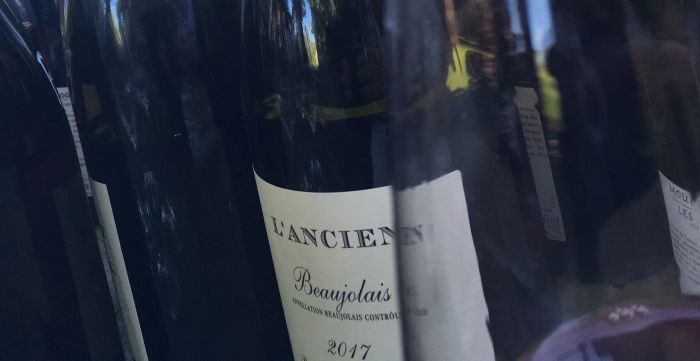
harvest report
03.10.2003
2003 Harvest Report by Joe Dressner
<p>It has been a horribly hot summer here in France. Record-breaking temperatures and relentless sun. This is not a nation equipped for such heat, there is little or no air conditioning, and the summer has taken a human toll.<br />
<br />
And what about the vines?<br />
<br />
The <glossary title="521">harvest</glossary> has started way earlier then anyone can recall in much of France. The official date here in the <glossary title="702">Mâconnais</glossary> was August 13th! Essentially, the hot wave begain in April and has not stopped since. The vine's vegetation cycle is nearly a year in advance throughout France.<br />
<br />
It is always difficult to generalize, but this has been amazing year with a little bit of everything in the vineyards. It has been incredibly hot, so alcohol degree is high. <glossary title="1129">Yields</glossary> are fairly small throughout France, with various regions having suffered from <glossary title="1135">frosts</glossary> or <glossary title="1136">hailstorms</glossary> earlier this year. Additionally, the heat has dried out a many vineyards and there is more <glossary term="Concentration" title="324">concentration</glossary> and less juice then other years.<br />
<br />
Dried out grapes are a deep worry. They can add disagreeable <glossary title="1010">tannins</glossary> and flavors that work to the detriment of the wine's fruitiness.<br />
<br />
So, the <glossary title="521">harvesting</glossary> has begun and we will have to see, case-by-case what the results are in the vineyard. Apparently, some sources are trumpeting this as the "<glossary title="1109">Vintage</glossary> of the Century." This is patently absurd at this point -- no wine has been made and the final results are yet to be seen.<br />
<br />
Yes, there is a great deal of <glossary term="Concentration" title="324">concentration</glossary> and small <span class="zalup"><span><glossary title="1129">yields</glossary><span>,</span></span></span> but on the other hand there is a low level of <glossary title="71">acidity</glossary> and uneven ripeness. What this will be like several months down the road is still anyone's guess.<br />
<br />
Denyse Louis and I happen to be in France through the beginning of September and we went down to<font color="#7b143e"><strong> </strong></font>Domaine des Terres Dorées in the <glossary title="151">Beaujolais</glossary> to watch and minimally participate in the <span class="zalup"><span><glossary title="521">harvest</glossary><span>.</span></span></span><br />
<br />
Jean-Paul Brun is one of only two <glossary title="151">Beaujolais</glossary> producers equipped with a genuine "table de trie". The grapes are dumped out onto the table and are then <glossary term="Sorting" title="1380">sorted</glossary> by hand.<br />
<br />
Unlike most <glossary title="151">Beaujolais</glossary> producers, Jean-Paul Brun does not do a <span class="zalup"><span><glossary title="236">carbonic maceration</glossary><span>,</span></span></span> but has a sophisticated <glossary title="378">destemming</glossary> machine that cleans up the grapes. Absolutely essential this year, with the state of the incoming <span class="zalup"><span><glossary title="521">harvest</glossary><span>.</span></span></span> There are beautiful grapes, but also dried out grapes that are eliminated at the sorting table and by the <span class="zalup"><span><glossary title="378">destemmer</glossary><span>.</span></span></span> The picture below shows me sorting out the crop (<strong>ed note:</strong> this picture has been lost).<br />
<br />
Below is an example of how good this <glossary title="1109">vintage</glossary> can look. These <glossary title="478">Gamay</glossary> grapes are small, ripe and fairly high in alcohol. These grapes, in this batch, are destined for this year's <span class="zalup"><span><glossary title="725">Nouveau</glossary><span>.</span></span></span><br />
<br />
The final test is to taste the wine. Of course, it is very early and the <glossary title="441">fermentation</glossary> is only first beginning. Nevertheless, there seems to solid fruit, good <glossary title="71">acidity</glossary> (better <glossary title="71">acidity</glossary> then the technical reports) and no lack of alcohol. Below, Denyse Louis, Jean-Paul Brun of Domaine des Terres Dorées and I taste a batch of <glossary title="725">Nouveau </glossary>(<strong>ed note:</strong> this picture has been lost).<br />
<br />
We will be posting regular news here as the <glossary title="521">harvest</glossary> progress.<br />
<br />
Stay tuned....</p>
Article

harvest report
03.10.2002
2002 Harvest Report by Joe Dressner
<p><u><strong>Joe Dressner via Jean Paul Brun:</strong></u></p>
<p>I spoke today with Jean-Paul Brun of the<font color="#7b143e"><strong> </strong></font>Domaine des Terres Dorées.<br />
<br />
The growing season was nearly ideal until a couple of weeks ago. <glossary title="1129">Yields</glossary> were low and the vineyards were healthy and free of disease. The past two weeks have had several days of rain and there is a potential problem of rot throughout the <span class="zalup"><span><glossary title="151">Beaujolais</glossary><span>,</span></span></span> particularly in vineyards with large <span class="zalup"><span><glossary title="1129">yields</glossary><span>.</span></span></span> There is simply too much water in the ground. Jean-Paul's vineyards are not yet touched by rot, but he fears that it could develop if he does not <glossary title="521">harvest</glossary> at the right time. There is now a delicate balance – it is always advantageous to wait for greater <glossary title="639">maturity</glossary> and alcohol, but at the same time there is the risk of rampant rot if one waits too long.<br />
<br />
Jean-Paul will probably start picking around September 15th. He will have two workers in the vineyards doing <glossary term="Sorting" title="1380">triage</glossary> as the grapes are picked. The grapes will be protected by a layer of cold gas to preserve their freshness as they are transported to the <span class="zalup"><span><glossary title="254">cellar</glossary><span>.</span></span></span><br />
<br />
Jean-Paul no longer does a <span class="zalup"><span><glossary title="236">carbonic maceration</glossary><span>.</span></span></span> The <glossary term="Domaine" title="400">domaine</glossary> is equipped with a <span class="zalup"><span><glossary title="378">destemmer</glossary><span>,</span></span></span> which in a year with rot can be an enormous advantage. The <glossary title="378">destemmer</glossary> eliminates much of the <glossary title="182">grey rot</glossary> infested grapes and eliminates unripe or rotten stems. These stems can add a vegetal and disagreeable taste to the final wine.<br />
<br />
As always, Jean-Paul is not sure what the <glossary title="521">harvest</glossary> will look like until it actually begins. His warnings about rot are still purely conjectural. One hopes that the new two weeks bring some sun and <glossary term="Concentration" title="324">concentration</glossary> to the grapes.<br />
<br />
And, as always, Jean-Paul’s goal is to make a natural <span class="zalup"><span><glossary title="151">Beaujolais</glossary><span>.</span></span></span> A <glossary title="151">Beaujolais</glossary> with no (or little) <glossary title="270">chaptalization</glossary> with <glossary title="538">natural yeasts</glossary> and with juicy flavors and aromas. The vineyards, the <glossary title="254">cellar</glossary> and the personnel have all been primed for this goal.</p>
Article



